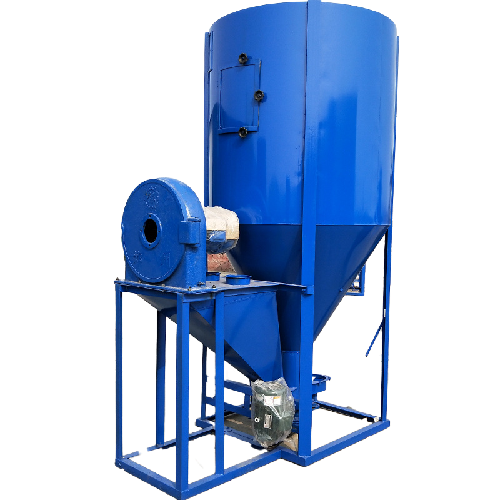High Efficiency FRP Centrifugal Fans for Industrial Applications and Ventilation Solutions
Dec . 31, 2024 22:40 Back to list
High Efficiency FRP Centrifugal Fans for Industrial Applications and Ventilation Solutions
FRP Centrifugal Fans Enhancing Efficiency and Durability in Industrial Applications
In the realm of industrial ventilation systems, the need for reliable and efficient fans is paramount. Among various types of fans, FRP (Fiberglass Reinforced Plastic) centrifugal fans have emerged as a popular choice due to their unique properties and advantages. These fans are specifically engineered to handle demanding environments, making them ideal for a variety of applications across different industries.
FRP centrifugal fans are constructed using a composite material that combines fiberglass fibers with a resin matrix. This composition not only provides superior strength but also ensures light weight, resistance to corrosion, and longevity. Unlike traditional metal fans, which can suffer from rust, oxidation, and other forms of deterioration, FRP fans maintain their structural integrity even in challenging conditions such as high humidity, chemical exposure, and varying temperatures.
One of the primary benefits of using FRP centrifugal fans is their efficiency. The fan's design allows for optimal airflow with minimal resistance, enabling better performance while consuming less energy. This energy efficiency is particularly vital in industrial settings, where long operating hours can lead to significant energy costs. By employing FRP centrifugal fans, companies can achieve substantial savings on energy bills while also contributing to a more sustainable operation.
Furthermore, FRP centrifugal fans are engineered for versatility. They can be customized to meet the specific needs of different applications, whether it be for air exhaust, air supply, or material handling. Industries such as chemical processing, wastewater treatment, and food processing often require specialized ventilation solutions to ensure safe and efficient operations. The ability to tailor FRP fans in terms of size, capacity, and specific performance characteristics makes them an attractive option for diverse industrial applications.
frp centrifugal fan

Maintenance is another crucial aspect of industrial fans that cannot be overlooked. FRP centrifugal fans require less maintenance compared to their metal counterparts due to their corrosion-resistant properties and the absence of vulnerable components like painted surfaces that can chip or peel. This reduces downtime and maintenance costs, allowing businesses to focus on their core operations rather than on repairs and upkeep.
Moreover, the lightweight nature of FRP materials enables easier handling and installation. This can be particularly beneficial in retrofitting existing systems or when installing in hard-to-reach areas. With their unprecedented ease of installation, companies can reduce labor costs and time, further enhancing their operational efficiencies.
Another important factor to consider is the noise levels generated by centrifugal fans. FRP centrifugal fans typically operate at lower noise levels compared to traditional fans, which is a critical consideration for industries that require a quieter working environment. This not only enhances worker comfort but also helps comply with local regulations concerning noise pollution.
Environmental considerations are gaining precedence in industrial operations, and FRP centrifugal fans align with these goals. Their durability and efficiency contribute to reduced energy consumption and less frequent replacements, ultimately lowering the environmental footprint of industrial processes. Additionally, many manufacturers are now focusing on sustainable production methods for FRP materials, further enhancing the eco-friendliness of these fans.
In conclusion, FRP centrifugal fans represent an innovative solution for industrial ventilation needs. Their corrosion resistance, energy efficiency, customizable design, low maintenance requirements, and reduced noise levels make them superior to traditional fan options. As industries continue to evolve and demand more sustainable, efficient, and reliable equipment, FRP centrifugal fans are poised to play a pivotal role in enhancing operational productivity and environmental responsibility. With ongoing advancements in FRP technology and applications, these fans will undoubtedly remain a vital component of modern industrial systems, driving performance and reliability for years to come.
-
Hot Sale 24 & 18 Door Rabbit Cages - Premium Breeding Solutions
NewsJul.25,2025
-
Automatic Feeding Line System Pan Feeder Nipple Drinker - Anping County Yize Metal Products Co., Ltd.
NewsJul.21,2025
-
Automatic Feeding Line System Pan Feeder Nipple Drinker - Anping County Yize Metal Products Co., Ltd.
NewsJul.21,2025
-
Automatic Feeding Line System - Anping Yize | Precision & Nipple
NewsJul.21,2025
-
Automatic Feeding Line System - Anping Yize | Precision & Nipple
NewsJul.21,2025
-
Automatic Feeding Line System-Anping County Yize Metal Products Co., Ltd.|Efficient Feed Distribution&Customized Animal Farming Solutions
NewsJul.21,2025






